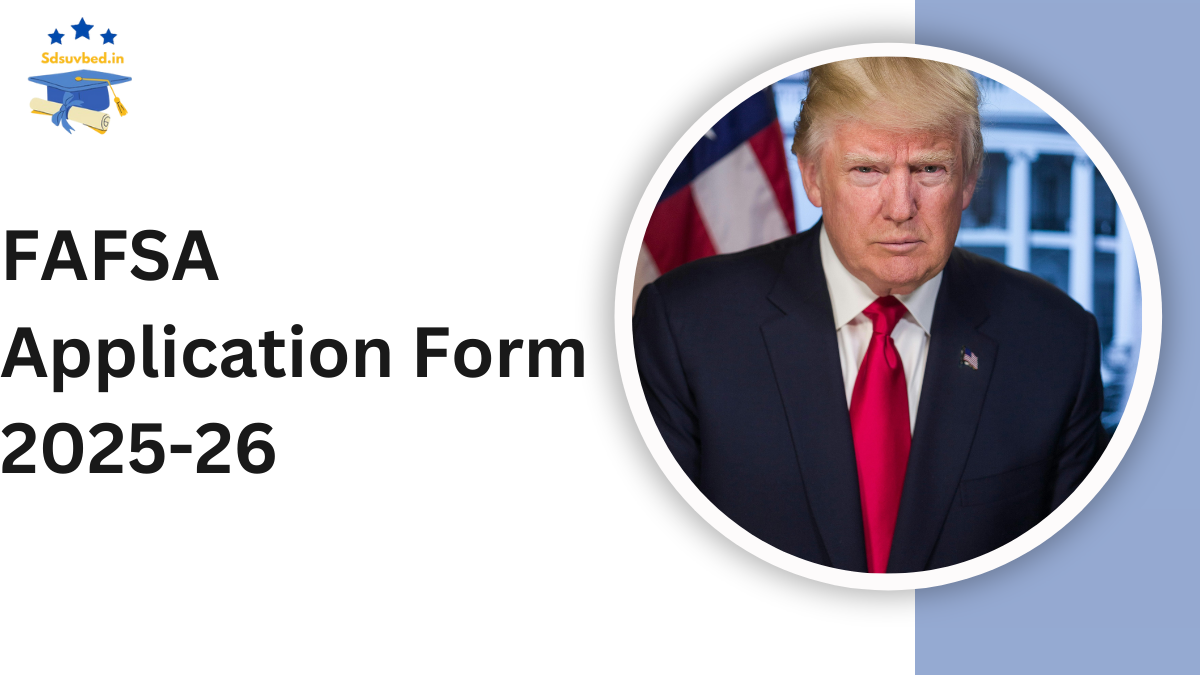The Free Application for Federal Student Aid (FAFSA) for the 2025-2026 school year opens on December 1, 2024, offering millions of students and families access to essential financial aid. After a challenging rollout in previous years, the Department of Education has simplified the application process, reducing the number of questions and integrating automatic data retrieval tools to streamline the experience.
These updates aim to make FAFSA more accessible, particularly for low-income students, while maintaining its critical role in providing access to Pell Grants, federal student loans, and work-study opportunities.

Key Changes to the FAFSA Form
This year’s FAFSA introduces significant updates to improve accessibility and usability.
Reduced Questions
The new form features two-thirds fewer questions, simplifying the process for applicants. This change reduces the time and effort required, particularly for students and families navigating complex financial situations.
Automatic Data Retrieval
The form now integrates with IRS tax records, allowing applicants to automatically import financial information. This feature eliminates manual entry errors and speeds up the application process.
Simplified Parental Information Requirements
Students whose parents lack a Social Security Number can submit their FAFSA without delay. This addresses a common barrier faced by families in previous application cycles.
FAFSA Application Timeline
| Date | Event |
|---|---|
| October 1, 2024 | Beta testing began for FAFSA applicants |
| December 1, 2024 | Official FAFSA opening for 2025-2026 cycle |
| October 1 (future) | New legal requirement for FAFSA opening |
The Department of Education conducted beta testing to ensure a smoother rollout, with over 167,000 applications submitted during the early phase, marking a significant improvement over last year’s delays.
How to Submit the FAFSA Form
Follow these steps to successfully complete and submit your FAFSA:
Step 1: Create Your FSA ID
Both students and parents (if applicable) need an FSA ID to access and sign the form electronically.
Step 2: Gather Required Documents
Have the following ready:
- Social Security Numbers (student and parents, if applicable)
- Federal income tax returns, W-2s, and records of untaxed income
- Bank statements and financial records
Step 3: Access the FAFSA Form Online
Visit studentaid.gov to access the form. A paper version is also available for those who prefer it.
Step 4: Enter Personal Information
Provide basic details such as name, date of birth, and Social Security Number.
Step 5: Input Financial Information
Use the IRS Data Retrieval Tool to import tax data directly, if eligible. This minimizes errors and simplifies the process.
Step 6: List Schools
Include the codes for all colleges you’re applying to so they receive your FAFSA information.
Step 7: Determine Dependency Status
Answer questions to determine whether parental information is required.
Step 8: Provide Parent Information (if needed)
Dependent students must include parental financial details. Parents without a Social Security Number can enter zeros where applicable.
Step 9: Sign and Submit
Use your FSA ID to sign electronically. Ensure both the student and parent signatures are complete.
Step 10: Review Confirmation
After submission, carefully review the confirmation page to ensure all information is accurate.
Financial Aid Opportunities Through FAFSA
Completing the FAFSA opens the door to a variety of financial aid options:
Pell Grants
- Need-based aid that does not require repayment.
- Maximum award amounts vary annually.
Federal Student Loans
- Low-interest loans with flexible repayment options.
- Subsidized loans for students with financial need.
Work-Study Programs
- Part-time employment opportunities for students to earn money while in college.
The Department of Education has emphasized that more low-income students will qualify for aid due to the streamlined process.
Legislative Updates Impacting FAFSA
Legislative efforts are underway to ensure consistent FAFSA release dates moving forward. A proposed bill would require the form to open on October 1 annually, allowing students more time to complete their applications.
Last year, FAFSA submissions dropped by 3% (approximately 432,000 applications), primarily due to technical challenges and delays. The Department of Education aims to reverse this trend with the current cycle’s improvements and increased customer support.
FAQs
What is FAFSA?
FAFSA is the Free Application for Federal Student Aid, a form used to determine eligibility for grants, loans, and work-study programs to fund college education.
When does the 2025-26 FAFSA open?
The FAFSA for the 2025-26 school year opens on December 1, 2024.
What are the major changes to this year’s FAFSA?
The form now has fewer questions, integrates automatic tax data retrieval, and simplifies parental identity verification.
How can I maximize my financial aid?
Submit your FAFSA early, ensure all required documents are accurate, and list all schools you’re applying to.
Are Pell Grants taxable?
Pell Grants are non-taxable if used for qualified education expenses like tuition and fees.
What is the IRS Data Retrieval Tool?
The IRS Data Retrieval Tool allows applicants to import tax information directly into the FAFSA, reducing errors and manual entry.
Can undocumented parents help their children complete FAFSA?
Yes, students can still submit FAFSA forms even if their parents lack a Social Security Number. Parents should enter zeros where applicable.
How long does it take to complete FAFSA?
On average, it takes about one hour to complete, depending on financial complexity.
Click here to know more.
A passionate content writer specializing in creating engaging, SEO-optimized content. With expertise in blogs, web copy, and storytelling, I craft words that connect with audiences and deliver results.
